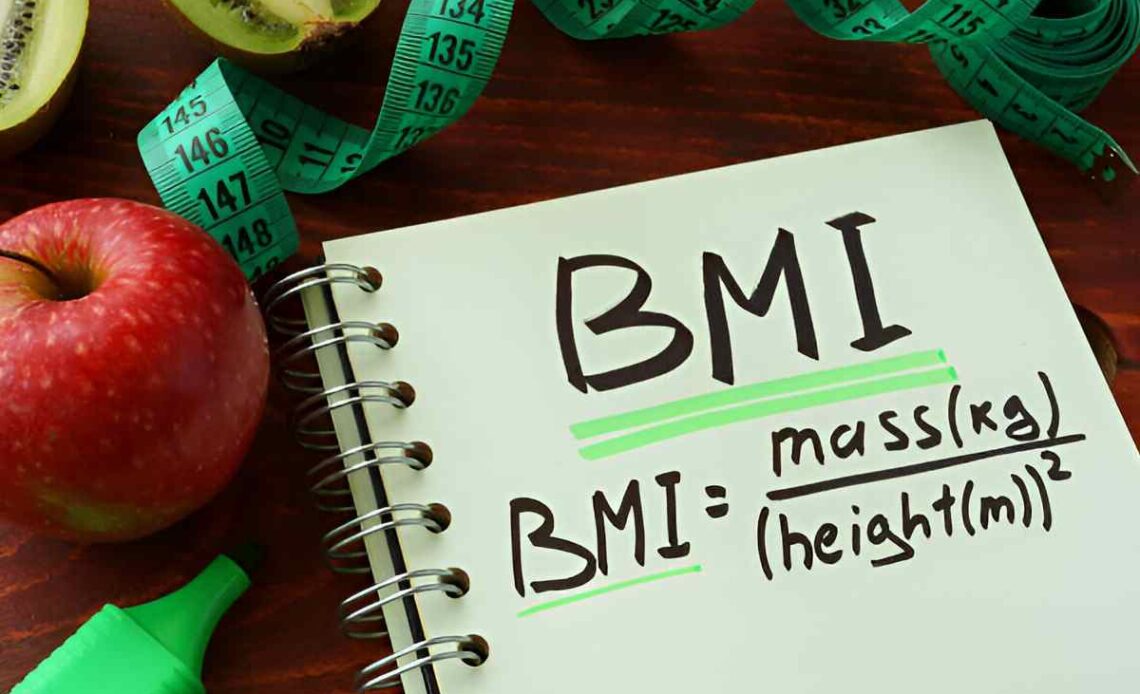
At the moment, the prevalence of obesity in India is 40.3%. This is why BMI has become a regular part of medical check-ups due to the growing concern of reducing obesity and staying fit.
Body mass index (BMI) is an easy and efficient method of measuring a person’s body weight in relation to their height. It assists in categorizing individuals into different weight groups, including underweight, normal weight, overweight, and obesity, and shows crucial information about their health status.
However, BMI interpretation is not the same for all ages since the composition of the body varies with age. Hence, it is crucial to know BMI tables for various age groups in order to have a healthy lifestyle and avoid health hazards.
What is the BMI Table?
A body mass index (BMI) table serves as a reference chart to categorize people as per their weight and height. It provides an estimate of the weight range in which a person falls, enabling them to detect underlying health conditions and pursue health goals. BMI can be calculated by dividing a person’s weight in kilograms by the square of the height in meters.
The BMI table provides ranges like underweight, healthy weight, overweight, and obese to help people understand where they fall as per their BMI value.
BMI Table for Different Age Groups: Explained
Here is a detailed tabular breakdown of BMI categories as per different age groups:
| Age Group | BMI Category | BMI Range |
| 1. Children and Teens (2-19 years) | Underweight | Below the 5th percentile |
| Normal Weight | 5th to less than the 85th percentile | |
| Overweight | 85th to less than the 95th percentile | |
| Obese | 95th percentile or higher | |
| Severe Obesity | 120% of the 95th percentile or higher,
or 35 kg/m2 or higher |
|
| 2. Adults (20 years and above) | Underweight | Below 18.5 |
| Normal Weight | 18.5 to 24.9 | |
| Overweight | 25 to 29.9 | |
| Obese | 30 or greater | |
| 3. Adults (60 years and above) | Underweight | Below 18.5 |
| Normal Weight | 18.5 to 24.9 | |
| Overweight | 25 to 29.9 | |
| Obese | 30 or greater |
Note: Remember that older people can experience some notable changes in their body’s composition due to decreased muscle mass, decreased bone mineral density, and variations in fat tissue distribution. As a consequence of these factors, BMI does not necessarily reflect health accurately in ageing individuals.
How to Calculate BMI?
Calculating the body mass index (BMI) involves using information on the height and weight of individuals. You can easily compute your BMI by using this formula:
Body Mass Index (BMI) = Weight (in kg) / (Height)² (in m²)
For instance, if your height is 1.8 meters and your weight is 80 kg, your BMI would be:
80 / (1.8) ² = 80 / 3.24 = 24.69
Once you calculate your Body Mass Index (BMI), refer to the above-mentioned table in order to determine whether your BMI is within the healthy range.
Advantages of Measuring BMI
Measuring BMI comes with several advantages, most notably when it comes to monitoring health. These include:
- Quick and Convenient: BMI is easy to calculate, requiring only weight and height measurements and an online BMI calculator.
- Cost-effectiveness: In contrast to other techniques of body fat measurement, g., skinfold thickness measurements or dual-energy X-ray absorptiometry (DXA) scans, BMI is a low-cost process that is easily accessible to most individuals.
- Easily Available: BMI calculators are available on various online platforms. Individuals can easily determine their BMI by entering their precise weight and height, making it a handy self-measuring tool without the necessity of consulting a doctor.
- Health Risk Indicator: People with higher BMI carry a number of health risks, such as heart disease, diabetes, and hypertension. By identifying individuals with high BMI, doctors can provide early intervention to lower health risks.
- Create a Customized Health Plan: Healthcare providers usually consider your BMI and health history when designing a tailored health plan. Whether you need to gain or lose weight, this plan could comprise exercises, food habits, and lifestyle changes to help you maintain a healthy weight.
Having a comprehensive understanding of the BMI tables for different age groups is crucial in monitoring your health. As you grow older, your bodies change, so you need to keep track of your BMI readings. Although BMI can be helpful, other factors such as muscle mass, body fat percentage, and general fitness need to be considered when determining health.
If you develop any BMI-related health issues or Viral Fever symptoms in the future, it is prudent to protect your health with an effective insurance plan in advance. Star Health provides comprehensive policies that can assist you in managing the treatment expenses of various illnesses related to obesity and more.
Browse our health insurance plans today!
Also Read: How Employee Computer Monitoring Software Can Improve Work-Life Balance
